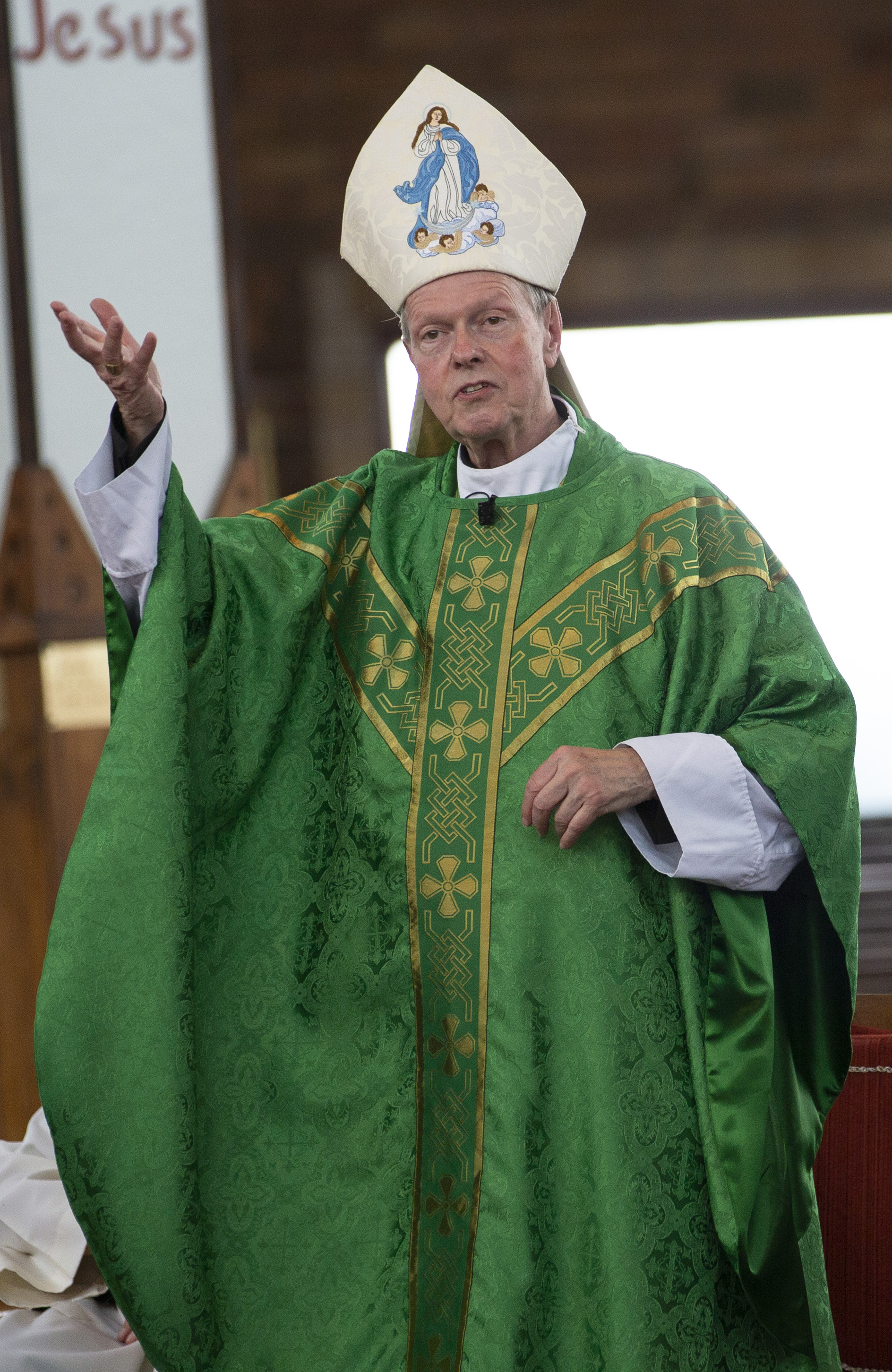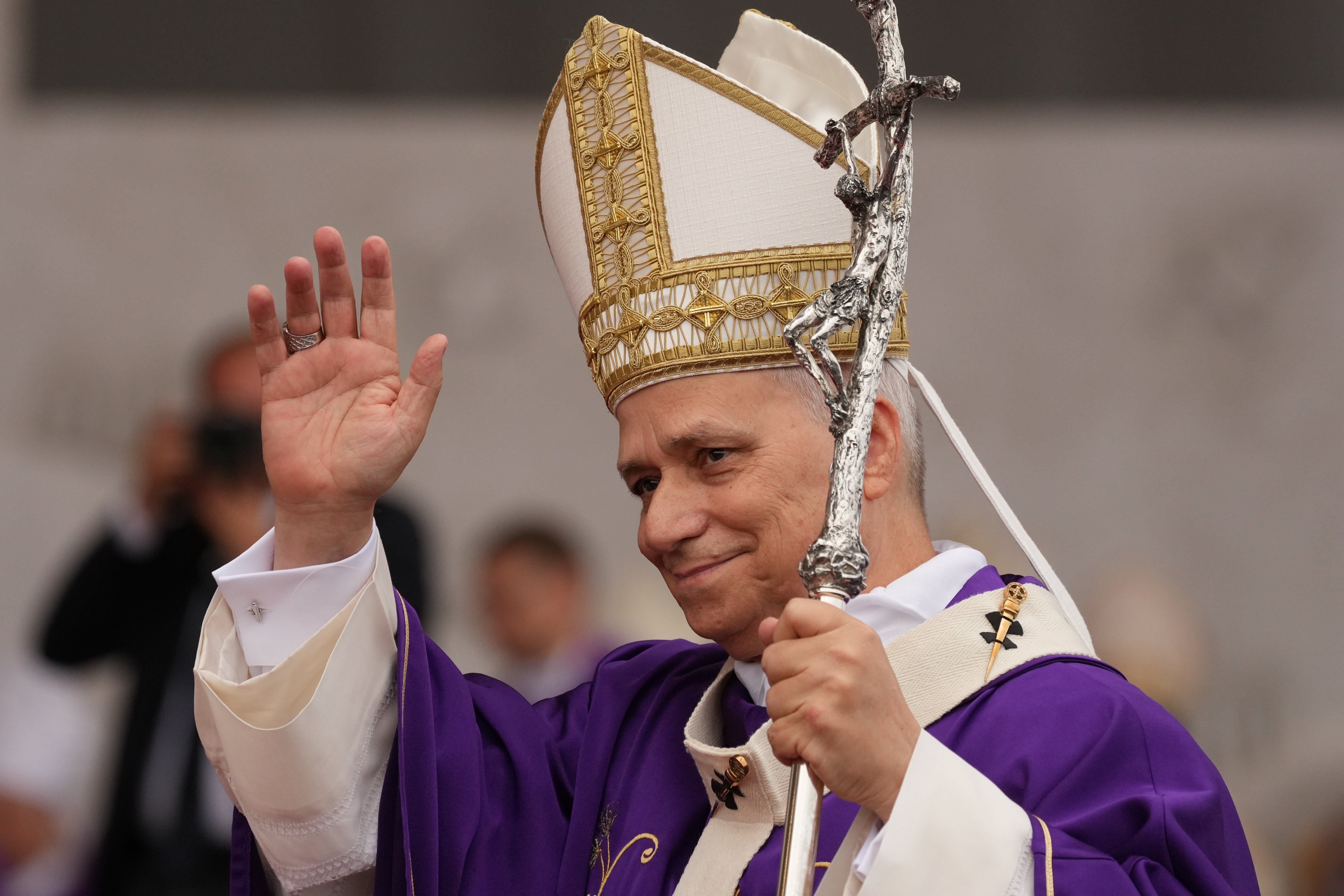April 6, 2018 at 1:53 p.m.
GUIDE TO CEREMONY
What happens at a bishop's ordination?
The event will be broadcast live on EWTN and Time Warner Cable News and on the internet via the Diocese's website, www.rcda.org (see sidebar).
A brief guide to the long and complex liturgy can help us to understand what happens during an ordination Mass, and also help us to reflect on the role of a bishop. All the gestures, actions and words in any liturgy - whether it be an ordination, a baptism, a wedding, a funeral or Sunday Mass - have a reason for being there and a deeper, symbolic meaning.
Note that the ordination takes place during the celebration of Mass. This is a reminder that the Eucharist is the "source and summit" of the life and work of the Church: Everything comes from and leads to the Eucharist.
This is a special Mass. All Masses are special, of course, but at an ordination Mass, we have a huge gathering of people: those representing all the parishes in the Diocese of Albany; family, friends and representatives from Bishop-elect Scharfenberger's home Diocese of Brooklyn; and parish leaders, religious, deacons, priests and bishops from all over the country. It is a sign that the Church is indeed a family and a people from all over the world.
The Mass begins in the usual way; but, after the readings, the Rite of Ordination begins. The ancient hymn "Veni Creator Spiritus" ("Come, Holy Spirit") or a similar hymn is sung, asking for the consecrating presence of the Holy Spirit. The Bishop-elect is accompanied by two priests, one of whom makes a formal request on behalf of all the Church that the Bishop-elect should be ordained as a bishop.
The official letter of appointment from Pope Francis is read. This is a reminder that any bishop is appointed by the pope; it is a worldwide or universal action. Every bishop is in communion with all the other bishops in the world (the "college of bishops") and all bishops are in communion with the head of that college, the pope.
After the reading of the letter, all those present give their assent by saying, "Thanks be to God," and, usually, applauding.
After the homily, the Bishop-elect is asked to make a number of promises that he will commit his whole life to love and serve the Church. The promises recall the three "tasks" of the bishop:
• to teach and preach;
• to be a true shepherd and guide to those in his care; and
• to help them grow in holiness (through celebration of the sacraments, through prayer and in other ways).
Those promises are an impressive list! We need to pray for our new Bishop and to keep Bishop Hubbard, the pope and all bishops and leaders in the Church in our prayers. (Each time we celebrate Mass, we pray for them during the eucharistic prayer or the intercessions.)
After these formalities, we focus on prayer. The Bishop-elect lies prostrate before the altar and the long, beautiful prayer called the litany of saints is sung. This reminds us of our communion with all the members of the Church - especially the saints, who have gone before us. We ask for their prayers and we ask the Lord to hear our prayers.
We then come to the central part of the liturgy. The principal ordaining bishop (in this case, Cardinal Timothy Dolan of the New York Archdiocese) lays his hands on the Bishop-elect, a biblical and ancient gesture of consecration and blessing. Two other bishops (Bishops Howard J. Hubbard of Albany and Nicholas DiMarzio of Brooklyn) do the same - a symbol of the universal nature of the bishop's office and work and that the Bishop-elect is about to enter into the wider college of bishops, in communion with each other and the pope.
The principal ordaining bishop prays the long and rich prayer of consecration or ordination. The prayer is like a story that recalls how God has chosen leaders to guide His people throughout history. The prayer especially recalls how Jesus Christ sent the Holy Spirit upon the Apostles and how that Spirit is passed on through bishops, the successors to the Apostles.
During the prayer, two deacons hold the Book of the Gospels over the head of the one to be ordained. This is a sign that the bishop is always subject to and guided by the Gospel and that a principal task of the bishop is to preach the Gospel and the faith that comes from the Gospel.
Once the prayer of consecration is complete, Bishop Edward Scharfenberger - he is now actually ordained as a bishop - takes part in a number of rituals and receives a number of gifts. These are called the Explanatory Rites, because they explain and illustrate what has just happened in the ordination prayer:
• He is anointed on the head with holy oil (another ancient biblical gesture) as a visible sign that he has been chosen and consecrated as a bishop.
• He is presented with the Book of the Gospels, because the bishop is to "preach the Word of God with all patience and sound teaching."
Bishop Scharfenberger receives three signs or symbols of his office as a bishop:
• a ring, a sign that he is now "wedded" to his Diocese and to the wider Church and must always be faithful to that special bond;
• the miter (the headdress worn by bishops at liturgical functions), a sign of his role as a bishop (and, some commentators suggest, a symbol of the flames that hovered over the heads of the Apostles when the Holy Spirit came upon them at Pentecost; the prayer that is said uses words from Scripture that the new bishop may "receive the crown of righteousness"); and
• the crosier, the episcopal staff that looks like a shepherd's crook, for the bishop is the chief shepherd of his flock.
The ordination rite is now nearly complete. Bishop Scharfenberger is led to the special chair that any bishop has, called the "cathedra," from which our word "cathedral" comes: the place of the bishop's chair. The chair is a symbol of his office as a teacher and that he presides over the celebration of the Eucharist.
Bishop Scharfenberger then exchanges the sign of peace with all the bishops who are present to show that he is now a member of the college of bishops.
The Mass continues in the usual way - but with Bishop Scharfenberger celebrating Mass as the new Bishop of the Diocese of Albany. Our celebration is also special as we look forward to his love and care for the Diocese and for the wider community and Church.[[In-content Ad]]
SOCIAL MEDIA
OSV NEWS
- Take time to review the past year with God, Pope Leo suggests
- Missionary on the move: Where Pope Leo XIV might travel next in 2026
- Dispensation in Columbus diocese for those who fear immigration crackdown pursuit
- Puerto Rico Catholic governor signs historic personhood law for the unborn
- Wisconsin man’s Catholic faith revived after finding bishop’s crosier in scrapyard
- ‘Knives Out’ discovers the strange, attractive light of the Christian story
- Why is New Year’s Day a holy day of obligation?
- India: Christmas celebrations disturbed or canceled over Hindu nationalist violence
- Vatican says close to 3 million people saw Pope Leo at the Vatican in 2025
- Vatican agency says 17 churchworkers murdered in 2025







Comments:
You must login to comment.